Rudjer Boskovic – Dubrovnik’s Shining Example of the Enlightement
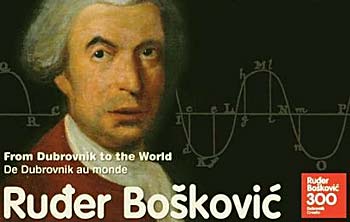 One of the most famous figures of Dubrovnik’s Enlightenment was Ruđer Bošković (1711-1787). Born in Dubrovnik, Bosković was a polymath in the true sense of the word, being a world renowned physicist, astronomer, mathematician, philosopher, diplomat and a poet. Having been educated within the Jesuit order, Bošković’s career would include working for all the major countries in Europe and membership of a significant number of scientific institutions such as the Royal Society in London, the French Academie Royale des Sciences and the Russian Academy of Sciences. His intense correspondence with notable contemporaries in Europe included Voltaire, D’Alambert and Bernoulli. Spending most of his life in France and the Italian peninsula, he published groundbreaking scientific work, most notably Theoria Philosophiae naturalis (1758) which established him as a forerunner of modern physics. Most of his manuscripts are kept in the special Bošković Archives in the Rare Books library in Berkeley, University of California, USA.
One of the most famous figures of Dubrovnik’s Enlightenment was Ruđer Bošković (1711-1787). Born in Dubrovnik, Bosković was a polymath in the true sense of the word, being a world renowned physicist, astronomer, mathematician, philosopher, diplomat and a poet. Having been educated within the Jesuit order, Bošković’s career would include working for all the major countries in Europe and membership of a significant number of scientific institutions such as the Royal Society in London, the French Academie Royale des Sciences and the Russian Academy of Sciences. His intense correspondence with notable contemporaries in Europe included Voltaire, D’Alambert and Bernoulli. Spending most of his life in France and the Italian peninsula, he published groundbreaking scientific work, most notably Theoria Philosophiae naturalis (1758) which established him as a forerunner of modern physics. Most of his manuscripts are kept in the special Bošković Archives in the Rare Books library in Berkeley, University of California, USA.
As a pupil, Ruđer Bošković displayed a sharp intellect. In 1725, he left his home to pursue further studies in Rome. He was in the care of two Jesuit priests who took him to the Jesuit school of Sant’Andrea delle Fratte, where he excelled at maths and physics. Before the age of thirty, he was appointed professor of mathematics. Notwithstanding the arduous duties of his professorship, he found time for investigation in all the fields of physical science. This included amongst other things the transit of Mercury, the observation of the fixed stars, the application of mathematics to the theory of the telescope, the theory of comets, the law of continuity, the double refraction micrometer, and various problems of spherical trigonometry.
His reputation got him noticed by Pope Benedict XIV in 1742 who chose him to work out the solution to restoring the cracked cupola at the dome of St Peter’s in Rome. Bošković’s resolution included placing five circle concentric iron bands, which was eventually taken up. By this time, he was also a leading European authority for static computations and civil engineering.
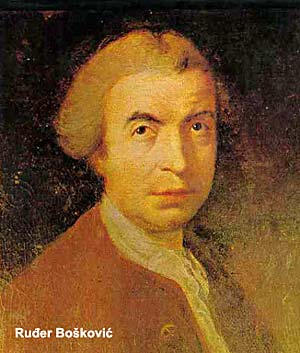 In one of his first published works in 1745, Bošković published De Viribus Vivis where he engaged with Isaac Newton’s gravitational theory and Gottfired Leibniz’s metaphysical theory of monad points. He developed the idea of ‘impenetrability’ which explained the property of hard bodies in terms of force rather than matter. This was the beginning of Bosković’s work on atomic theory and astronomy, where he would make significant contributions. This included the first geometric procedure for determining the equator of a rotating planet and for computing the orbit of a planet from three observations of its position. In 1753 he discovered the absence of atmosphere on the Moon. A few years later in 1758, developing his theory of forces, Boskovic published his seminal work Theoria Philosophiae naturalis ad unicam legem virium in natura existentium (Theory of Natural philosophy derived to the single Law of forces which exist in Nature), containing his atomic theory and his theory of forces.
In one of his first published works in 1745, Bošković published De Viribus Vivis where he engaged with Isaac Newton’s gravitational theory and Gottfired Leibniz’s metaphysical theory of monad points. He developed the idea of ‘impenetrability’ which explained the property of hard bodies in terms of force rather than matter. This was the beginning of Bosković’s work on atomic theory and astronomy, where he would make significant contributions. This included the first geometric procedure for determining the equator of a rotating planet and for computing the orbit of a planet from three observations of its position. In 1753 he discovered the absence of atmosphere on the Moon. A few years later in 1758, developing his theory of forces, Boskovic published his seminal work Theoria Philosophiae naturalis ad unicam legem virium in natura existentium (Theory of Natural philosophy derived to the single Law of forces which exist in Nature), containing his atomic theory and his theory of forces.
Between 1759 – 1761, Boskovic travelled extensively visiting France, Flanders, Constantinople, Warsaw and eventually settling in London. One of the reasons for his London trip was as a diplomat of the Republic of Ragusa. The UK government suspected that warships had been outfitted in the port of Dubrovnik for the service of France and that therefore the neutrality of Dubrovnik had been breached. Bošković was selected to undertake an ambassadorship to London in 1760 to vindicate Dubrovnik’s neutral position. He fulfilled the task successfully and during his stay he managed to impress his contemporaries enough to be elected a fellow of the Royal Society.
Despite Jesuits being banned from working and living in the UK, Bošković remained in England for over half a year and conversed and met with many figures of the contemporary Enlightenment: the political philosopher Edmund Burke, the original poet laureate Samuel Johnson, the astronomer James Bradley, the head of the Royal Academy George Parker and the American inventor Benjamin Franklin. It was with the future founding father that Bošković worked together on some electrical experiments. During his time in the UK, Bošković designed a telescope filled with water in all its components. This telescope would later be implemented at the Greenwich observatory in 1871.
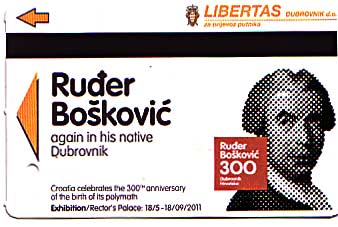 His expertise meant that he was invited by the Royal Society of London to undertake an expedition to California to observe the transit of Venus in 1769. Unfortunately, the recent decree of the Spanish government had expelled Jesuits from its dominions. Nevertheless, his international experience and diplomatic capabilities allowed Bošković to keep his home city informed of the most important events taking place in Europe and beyond such as the Seven Years War and the American Revolution. Deprived of his post by the intrigues of his associates, he was about to retire to Dubrovnik when in 1773 the news of the suppression of the Jesuit order in Italy reached him.
His expertise meant that he was invited by the Royal Society of London to undertake an expedition to California to observe the transit of Venus in 1769. Unfortunately, the recent decree of the Spanish government had expelled Jesuits from its dominions. Nevertheless, his international experience and diplomatic capabilities allowed Bošković to keep his home city informed of the most important events taking place in Europe and beyond such as the Seven Years War and the American Revolution. Deprived of his post by the intrigues of his associates, he was about to retire to Dubrovnik when in 1773 the news of the suppression of the Jesuit order in Italy reached him.
In 1773 a charter granted by Louis XV made him a French subject. Soon he was appointed by Louis XV to the prestigious position of Director of Naval Optics of the French Navy in Paris (Optique Militaire de la Marine Royale de France) with an income of 8000 livres. Ruđer Bošković became a good friend to many outstanding figures of the day such as the co-editor of the Encyclopédie D’Alembert and scientists like the mathematician Clairaut, Lalande and Buffon. Living comfortably by the French Academy, Bošković gained French citizenship and stayed for ten years.
About 1777 he returned to Milan, where he kept teaching and directing the Brera observatory. In 1783 he returned to Italy, and spent two years at Bassano, occupying himself with the publication of his Opera pertinentia ad opticam et astronomiam, etc., published in 1785. At that time his health was failing, his reputation was on the wane, his works did not sell, and he gradually fell prey to illness and disappointment. He died in Milan and was buried in the church of St. Maria Podone.
Need Entry Tickets to Town Walls? Buy Now
The legacy of Bošković’s atomic theory gave a clear, precisely-formulated system utilizing principles of Newtonian mechanics. This inspired the British scientist Faraday to develop field theory for electromagnetic interaction. Later scientists such as Kelvin, the English physicist paid tribute to the polymath from Dubrovnik saying that his atomic theory is a pure “Boskovicianism.” Over a hundred years later, the scientist Tesla claimed that Einstein’s theory of Relativity was the creation of Bošković. For his contributions to astronomy, the lunar crater Bošković was named after him. (Vicko Marelic)
Gallery of Rudjer Boskovic images from Dubrovnik
- rudjer boskovic plaque in vienna
Dubrovnik History Articles
- The History of Dubrovnik – an introduction
- The foundation in the Dark Ages – balancing on a borderland
- Early medieval times
- The beginning of trade
- Trade Agreements with Balkan Countries
- Breaking Away From Venice and Territorial Expansion
- The Ottomans Arrive
- Dubrovnik’s Golden Age
- Dubrovnik as the Focal Point of Dalmatian Enlightment
- Rudjer Boskovic – Dubrovnik’s Shining Example of the Enlightement
- The Jews of Dubrovnik
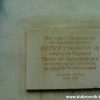
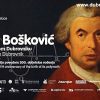
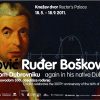
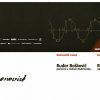

 Subscribe
Subscribe